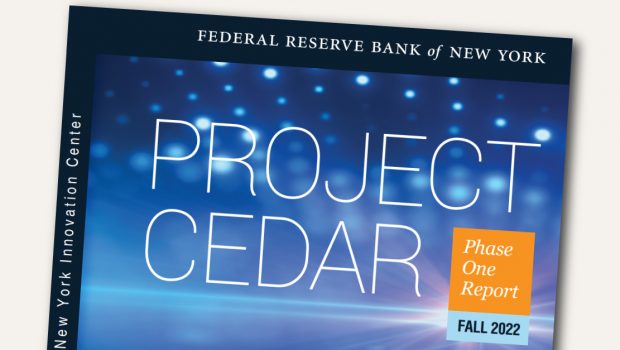Project Cedar: Improving Cross-Border Payments With Blockchain Technology
Project Cedar is the inaugural project of the New York Innovation Center. It is a multiphase research effort to develop a technical framework for a theoretical wholesale central bank digital currency (wCBDC) in the Federal Reserve context.
In Phase I of Project Cedar, a prototype for a wholesale central bank digital currency was developed to demonstrate the potential of blockchain to improve the speed, cost, and access to a critical element of the wholesale cross-border payments market—a foreign exchange (FX) spot transaction.
Problem Space
Wholesale cross-border payments are financial transactions between central banks, private sector banks, corporations, and other institutions based in separate jurisdictions. FX spot trades are among the most common wholesale cross-border payments, as they are often required to support broader transactions, such as for international trade or foreign asset investment.
While cross-border payments function well, there are opportunities for improvement. In general, it takes around two days for a FX spot transaction to settle. During these two days, counterparties are exposed to settlement, counterparty, and credit risk which, among other things, can hinder an institution’s ability to access liquidity.
Solution Concept
In a simulated wholesale FX spot transaction, Project Cedar developed a wholesale central bank digital currency prototype to test whether blockchain technology can deliver fast and safe payments. Core to Project Cedar’s solution concept was the distributed ledger infrastructure—a multi-ledger construct in which each currency was maintained on a separate ledger, operated by its respective simulated central bank.
The Phase I prototype included design choices such as a permissioned blockchain network, utilizing an Unspent Transaction Output (UTXO) data model, and Rust as the primary programming language.
Results
Project Cedar showed that blockchain-enabled cross-border payments can be faster, simultaneous, and safer:
- Faster Payments: In the test environment, transactions on the blockchain-enabled distributed ledger system settled under 15 seconds on average.
- Atomic Settlement: The simulated ledger network enabled atomic settlement, meaning both sides of the simulated transactions were settled either simultaneously or not at all, and reducing the risks currently borne by counterparties.
- Safer and Accessible Transactions: The distributed ledger system design enabled payments on a 24/7/365 basis and supported objectives related to interoperability by enabling transactions across separate, homogeneous ledgers networks representing a variety of financial institutions, including central and private sector banks.
Next Steps
Phase I of Project Cedar revealed key questions and highlighted areas for further research, specifically around ledger platform design, interoperability, and security. As part of its continued wCBDC research, the NYIC will explore questions related to interoperability and ledger design, including how to achieve concurrence and best enforce atomic transactions across different blockchain-based payment systems.
Download the Phase I Report








Gloss